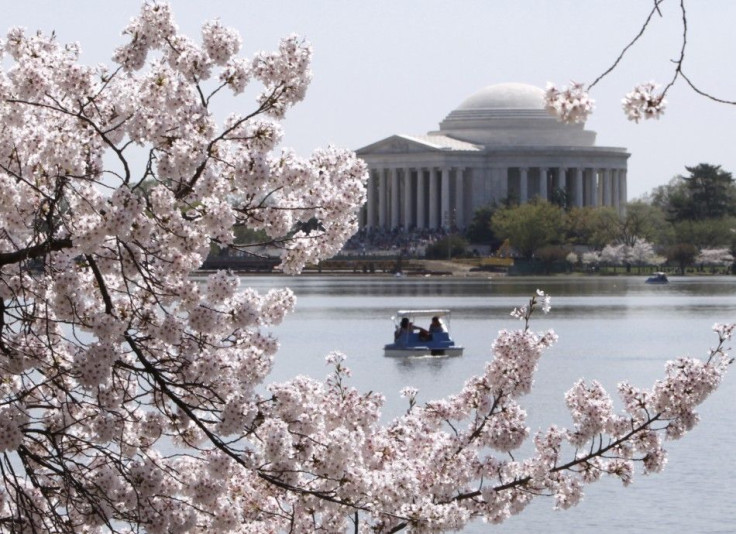Why Washington’s Cherry Blossom Festival Almost Didn’t Happen

It was 101 years ago that first lady Helen Herron Taft, with the help of Viscountess Chinda of Japan, laid the groundwork for one of Washington’s biggest annual events: The National Cherry Blossom Festival.
The pair planted the first two cherry trees along the north bank of the Tidal Basin in Washington’s West Potomac Park on March 27, 1912, to celebrate the lasting friendship between the U.S. and Japan. But it was an event that almost didn’t happen.
Eliza Scidmore, the earliest female board member of the National Geographic Society, first proposed the idea of planting cherry trees in Washington upon returning from a visit to Japan in 1885. She would spend the next 21 years advocating for their presence before convincing botantist David Fairchild of the U.S. Department of Agriculture to test the trees on his own hillside property in suburban Chevy Chase, Md., in 1906.
After completing tests in 1909, the pair wrote of their idea to the first lady, who had lived in Japan and thought bringing cherry trees to Washington would be “lovely.”
In a happy twist of fate, Jokichi Takamine, the world-famous Japanese chemist who discovered adrenaline and takadiastase, happened to be in Washington when the first lady received her letter and promised to donate thousands of trees in honor of the City of Tokyo.
For Scidmore, it looked as though her decades-long plan was about to become reality. But the first batch of 2,000 cherry trees arrived in 1910 diseased and infested with insects. To protect American growers, the Department of Agriculture determined that the trees would have to be destroyed.
What could have otherwise been a major diplomatic setback quickly brought the two nations together, and the second batch of more than 3,000 cherry trees arrived in 1912 unscathed.
The gift of the cherry trees would spawn a cycle of exchange between Japan and the U.S. In 1915, the American government donated flowering dogwood trees to the people of Japan. The gift exchange came full circle in 1981 when hundreds of cherry trees in Japan were destroyed in a flood. The U.S. government responded by offering Japanese horticulturists cuttings from Washington.
The National Cherry Blossom Festival as we know it today was born out of a re-enactment of the initial gift ceremony in 1927. By 1935, civic groups in Washington sponsored the first public celebration, and, by 1994, it was expanded to a two-week festival to accommodate a diverse schedule of activities over the blooming period. The event ballooned once more last year to a monthlong extravaganza dubbed “the nation’s greatest springtime celebration.”
Indeed, the National Cherry Blossom Festival is Washington’s biggest event (save inauguration years), pumping about $126 million into the city’s economy.
Some 4,000 cherry trees now line the Tidal Basin in West Potomac Park, East Potomac Park and the grounds of the Washington Monument, attracting more than 1.5 million visitors annually. Yet, the flowering season of powdery pink and creamy white cherry petals is famously short-lived.
As Japan's ambassador to the U.S. put it, the cherry blossoms’ draw is their “brightness, beauty and brevity.”
For Washingtonians, they're a symbol of the advent of spring and a time of rebirth -- but they're also a reminder of the softer side of cultural diplomacy.
The 2013 Cherry Blossom Festival runs from March 20 to April 14. For a complete listing of events, visit the National Cherry Blossom Festival site.
© Copyright IBTimes 2024. All rights reserved.






















